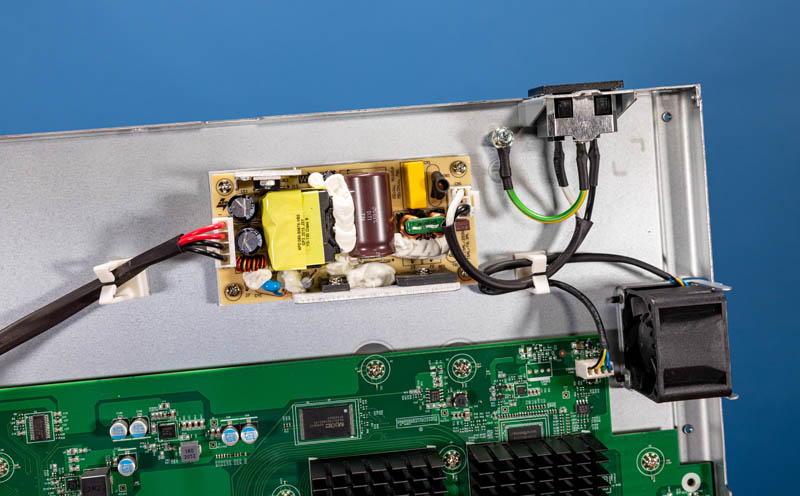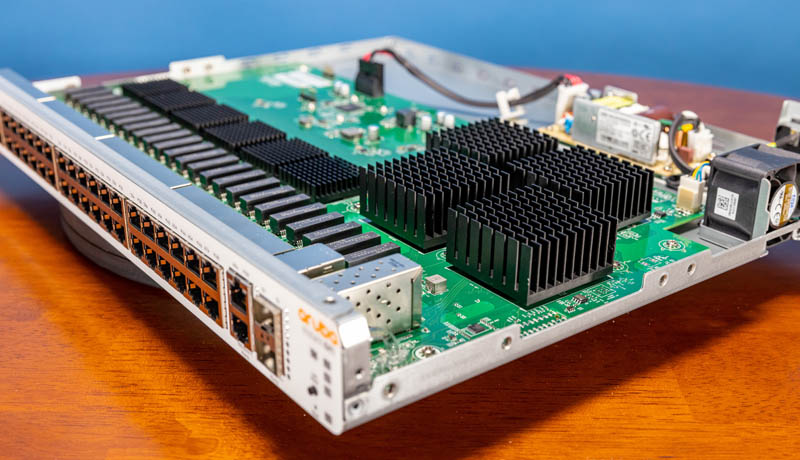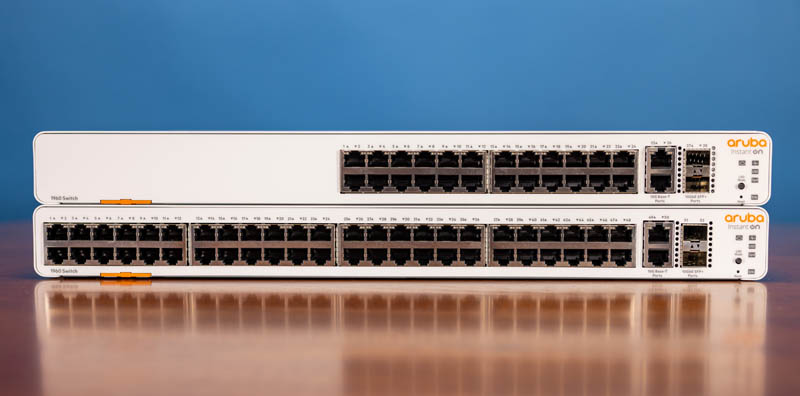HPE Aruba Instant On 1960 48G 2XGT 2SFP+ Switch Power Consumption
In terms of power consumption, we saw relatively low power. When we had the device completely idle, we saw under 12W, up slightly from the 9-10W we saw on the 24-port model. Aruba’s spec sheet says 60-80W at idle based on the input voltage. Our sense is that is likely with a full set of optics and connected devices which is different from how we test idle.

Maximum power consumption is rated at 120W. We did not get close to this even when adding devices and pushing traffic. The benefit is that it means we had very low noise from the fan since it did not have to expel much heat. Most of the time testing this switch, we could not hear the fan so this is one we can recommend for use in inhabited spaces.
HPE Aruba Instant On 1960 48G 2XGT 2SFP+ Switch Pricing and Market Analysis
In terms of pricing, the Aruba Instant On 1960 series is positioned in an interesting space. The pricing is all-in so there are no extra licenses and no fees for cloud management. The list price is $1,499, but we have seen street pricing with discounts of 25-30% so we think that one will be able to get this switch for under $1100 via a quick Google search.

With that, the pricing is very attractive versus competitors like Cisco, Netgear, and other traditional SMB players, especially once those extra costs are factored in. On the other hand, players like Ubiquiti and smaller SMB vendors like MikroTik have much more attractive pricing on this class of switch. There are certainly going to be vendor preferences involved, and if you are at a company that already uses Aruba, then this may be the logical choice. Aruba certainly has a premium product that feels more polished than a MikroTik (and even Netgear) but it is also at a discount to some of the other large vendors.
Overall, we think this is fair pricing for an Aruba offering, but it is not designed to be a bargain product leading with cost. Aruba has solid features so it is priced at a premium for that.
Final Words
Overall, we think Aruba has done a great job with the Instant On 1960 series. The 24-port version is also awesome with passive cooling. Stay tuned for that review. For the 48-port version, there was little to complain about with this switch, although we wish Aruba printed the full model number on the faceplate, not just on the service tag.

This is not the highest-performing switch by any means, and it certainly has a lot of competition being a 1GbE switch. We are starting to see firewalls and workstations transition to 2.5GbE and 10GbE, and just covered the Intel Ice Lake D launch where the embedded networking is up to 100GbE and so 25GbE is going to become common even on embedded platforms. There is a part of us that certainly wishes that Aruba made this switch a 2.5GbE/25GbE version to take advantage of those trends. Still, we have to concede that the market is still mostly 1GbE ports so Aruba’s choice makes sense.
Overall, the HPE Aruba Instant On 1960 48-port switch was executed brilliantly with solid hardware, great software, and all-in pricing that respects customers by not nickel and diming over features.




Do you have any insight into how well the more ‘advanced’ features work?
Things like the InterVLAN Routing, ACL rules, Stacking, and if that stacking supports MC-LAG?
The 1960 12XGT 4SFP+ (JL805A) Looks like an interesting model – ideal as a core for a small business, or connecting multiple servers, and then using the SFP+ ports to uplink to other switches?
Be interesting to see a review of that
Aren´t these switches essentially the same as the HPE Officeconnect 1950 series, but with a different (cloud) firmware.
JL805A – 1960 12XGT 4SFP+ vs JH295A – 1950 12XGT 4SFP+
Rather have a Ubquiti unifi for SMB. Unifi has better pricing more features, like you mentioned superficially POE. Additionally, where were these switches a couple of years ago? Late to market HPE/Aruba.
@Joeri – yes, but that goes for the whole of the 1960 line – e.g. JL808A = HPE OfficeConnect 1950 48G 2SFP+ 2XGT Switch JG961A.
There wasn’t much coverage of the 1950 line either, so would be interested to see some more coverage and what sort of limitations the range has.
I’m looking at the earlier 1930 24-port model as a replacement for an existing location that used unmanaged switches. Other than the 10GBase-T ports and stacking option, are there any differences in performance and OS features between the 1930 and 1960 lines? For more than twice the price of a similar 1930 on Amazon (and almost as much as the 1930 48-port with PoE) I’d expect quite a bit more from the 1960.
I think the value is higher in the Poe versions. Poe++ and 600w budget on 48 ports for 1800 with a killer warranty. We just picked one up for 1800 on b & h